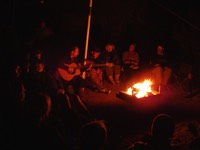Dory boatmen like to say there are five types of a “hit”. We’re not talking rubber raft repair here.
1. A “tap”
2. A “ding”
3. A “hole”
4. “Carnage”
and, finally;
5. “Heinous Carnage” (e.g., as Martin Litton used to put it: “A Hole Big Enough To Throw A Cat Through.”
Photo 1: Back in 1914, Bert Loper used sheets of metal riveted on, then sealed with pine pitch or whatever goop was handy:
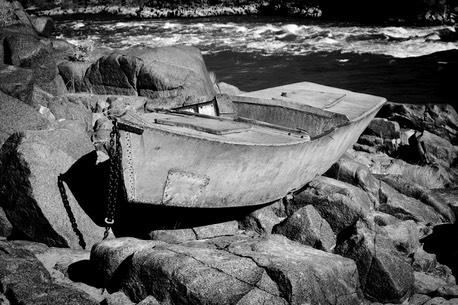
The “Ross Wheeler”, from 1914, still sitting at river’s edge at mile 109ish, “Hole?"
Later, the Kolbs and other wooden boaters did the same with plywood or planks:
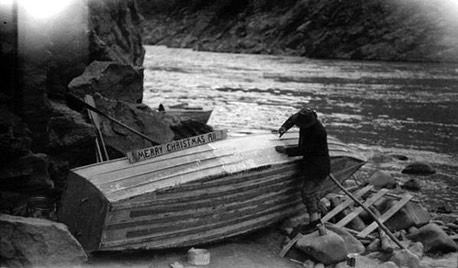
The Kolbs repair a wooden boat ("Heinous Carnage?")
Then, the dories perfected the plywood and fiberglass patch. Martin would often get them fixed before any other boating party could see the damage, and if he couldn’t, he’d make sure all the boats were lined up with their same sides away from the river, all neat and tidy and natural looking, everyone on shore all smiles, but we all knew as we passed that one of those boats had a hole in it and they were hiding it!
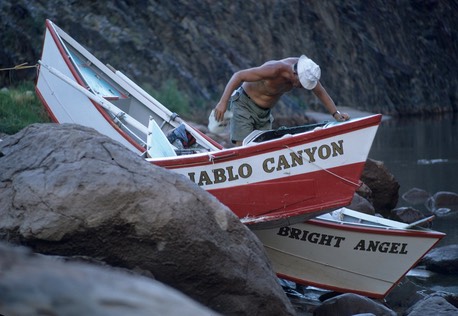
Water went down. Used to drop from 33,000 cfs to 5,000 cfs EVERY DAY! Bummer. (That’s a younger Martin Litton)
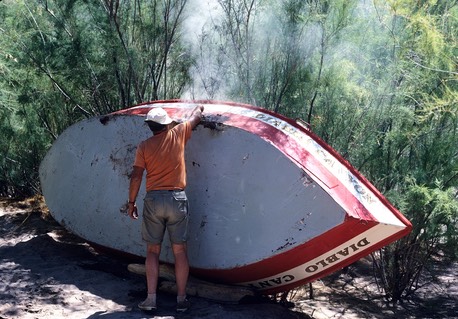
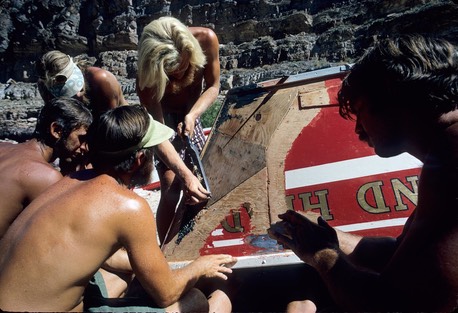
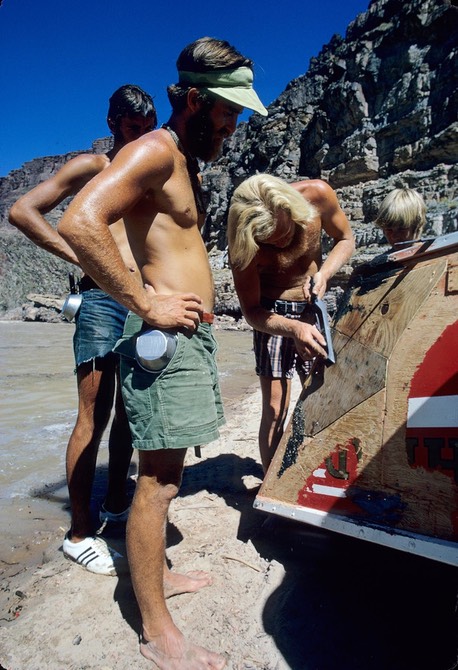
Old picture of young Regan Dale
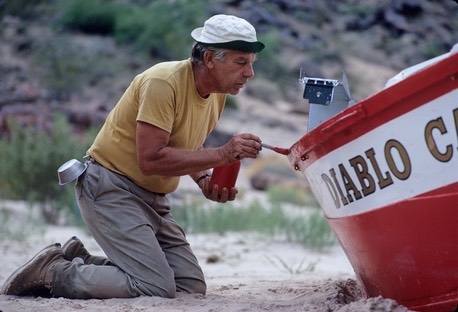
Martin doing the final touch-up
Now, at long last, we have marine epoxe that even works when wet (like a boatman)! Just a dab on a small ding or hole and done till you get back to the warehouse, where they’ll grind it off (it has no backbone, just like me), and repair it with real epoxe resin and some glass mat or weave or fillet.
You can’t just leave the hole in most dories, even if its not leaking (or not leaking too badly!) into the hold, because the water can seep into the sandwiched plywood and it will later rot. So, with a hole that’s been leaking too long, the warehouse boys and girls will have to keep tearing out the hole bigger and bigger until they get to dry ply.
If the hole’s too big and the epoxe needs a bit of backing, metal fly screen can be used for the matrix (backed inside with some cardboard duct taped in for a solid surface to lay in the goop. After the outside is gooped & its hardened, you can remove the cardboard and then goop more from the inside, using the now hard outside epoxe as the base.
My old dory, the Sam McGee, is not the usual Briggs boat style (nor is it the Rudy (Petschek) style, which has more rocker and higher sidewalls than a Briggs). its what’s called a “Lavro”, a bit pear-shaped (again, like me) and lots of rocker, with a tiny backside, kind of like a cowboy. I love how it rows, though its a tad slower in the flat water (and slides a bit sideways more than a Briggs boat in the big stuff… tho nowhere near like a self-bailing raft!). Sam’s hull is glass only, so, while it cracks a bit more when I hit hard, it doesn’t matter a darn if I let it leak for a while if we need to make miles or are too lazy (or drunk) to deal with it. Just grind it out later, let it air-dry, and patch. Voilà.
So, here’s a series from a few years back, after one of our boats (not me this time… I swear!) hit one of the multitude of rocks in the infamous and scary Hance Rapids. Bruce Keller, who built his own Rudi-style boat, the “One-Eyed Jack”, named after one of the lost rapids of the once-mighty Bio Bio in Chile (actually, probably my favorite!), is the main repairman, with Steve Kenney and myself helping out. This took about an hour and a half from hitting the rock to heading down towards Sockdolager.
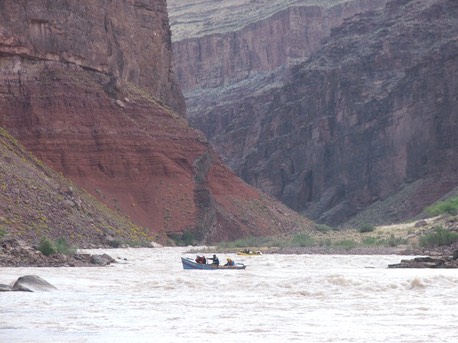
Looking upstream at Hance and me in the Sam McGee from repair beach.
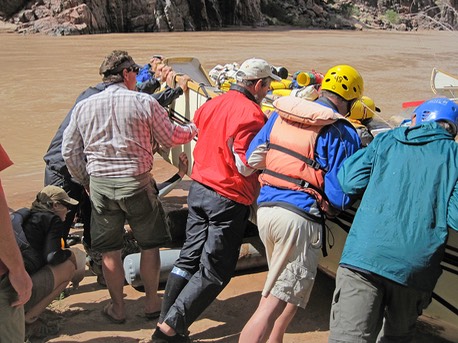
Roller tubes (old thwarts, used Egyptian pyramid style) helped to haul the boat on shore. Clients tilting, Bruce inspecting
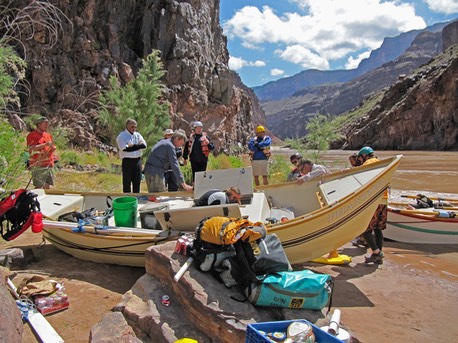
Okay, empty it out, we gotta patch both inside and out!
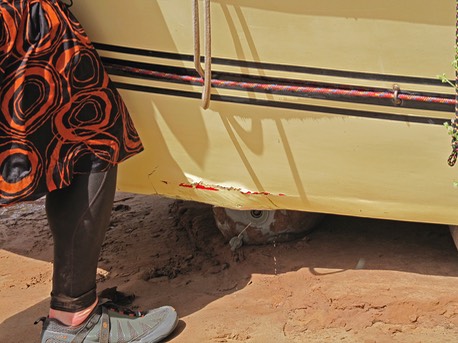
Big Steve Kenney’s leg, roller tube underneath. Hole? or Carnage?
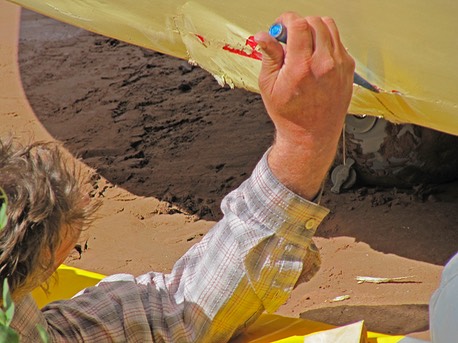
Get rid of the loose broken crap first
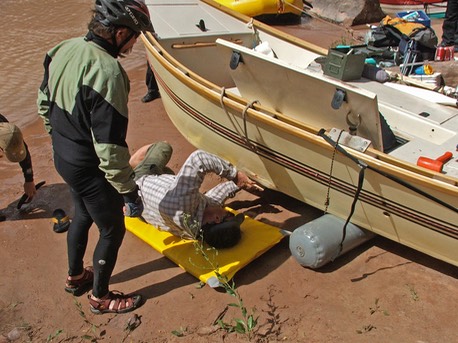
Me providing psychological assistance
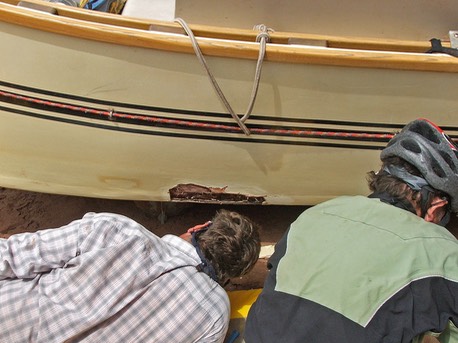
Loose stuff gone, you can see the ply and hole
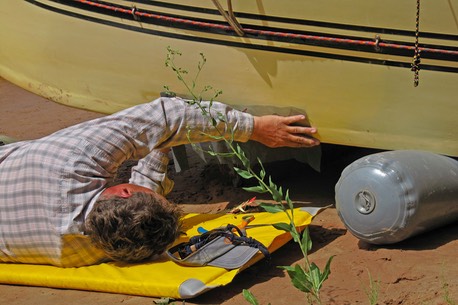
Sizing up the screen
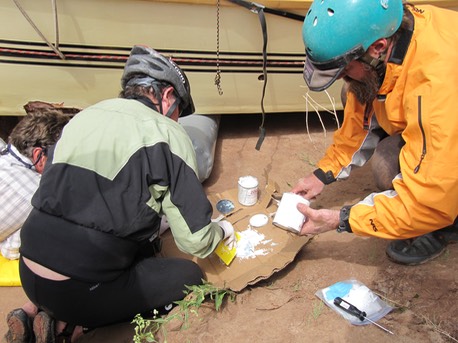
All is ready, time for me and Steve to mix the epoxe. Bruce then has 15 minutes for the first layer before it hardens. We mixed about 3 batches.
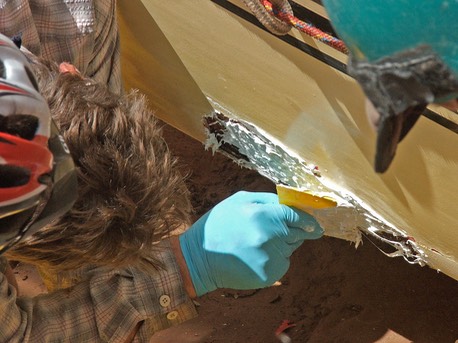
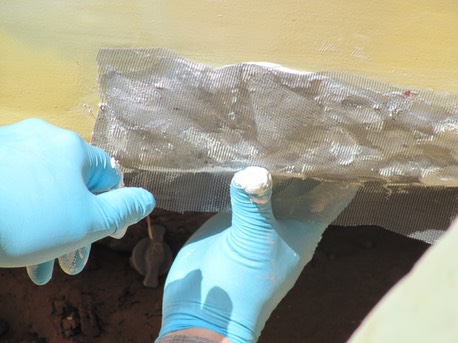
Screen to create a good strong layer.
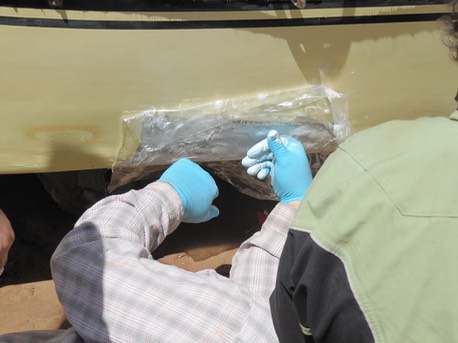
Some plastic (from a bag) to help final smooth and smear. It has to be removed after the epoxe is a bit hard, but not totally hard. Timing and experience is everything.
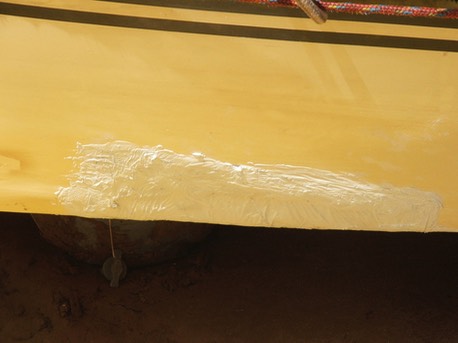
Ready to rock (Oooops. Bad pun). Next up: Sockdolager. The Phantom is ready to roll (Ooops, another bad pun) once more! Go, N.G., go!
